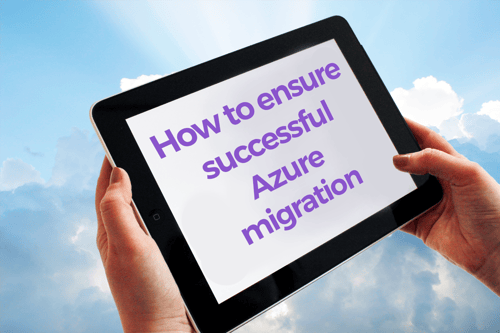Flexibility, cost-efficiency, and scalability are among the reasons why organizations are turning their attention to cloud. Migrating your IT infrastructure into a cloud environment can have clear benefits, though you will need to plan it carefully.
One popular cloud option is Microsoft Azure. Azure is a constantly-expanding set of cloud services developed by Microsoft for building, deploying, and managing services and applications anywhere.
These tips are for you who are already considering a migration and have chosen or are strongly considering Microsoft Azure as the option for your SQL Server data platform.
Why migrate SQL Servers into cloud?
The first thing you should ask yourself and your organization is: Why do we want to migrate into cloud? How will the business benefit from it?
It is very common that the reason for the migration of SQL Servers into Azure is driven by other layers, for example the applications. It is typical to transfer a specific application stack to cloud “all-in”, as decentralizing the different parts of the stack to different environments could be a risk: it makes the management more difficult, controlling the SLA’s harder, and can cause delays in data transfer, to name a few.
Even though the SQL Servers are not necessarily the central driver for the migration, you should still be careful not to overlook the database layer. If you don’t put enough focus on the data platform part of the infrastructure, you risk losing great opportunities for development, lack on optimization benefits, and might even choose the less-favorable and costly one from all the options you would have in Azure.
You should compare the options for the SQL Servers in Azure and list their benefits and disadvantages in your situation. The best choice to go with is the one that will give you enough benefits with the least amount of work.
Tackling the common obstacles and mistakes
To ensure you will achieve the benefits you are seeking for your organization, you should take the following steps into consideration in the migration of the data platform layer.

Step 1: Ensure you have a clear business case in addition to the list of business requirements.
Lacking the business requirements can also lead into difficulties in choosing the right kind of option that Azure has to offer. Things such as the need for technical flexibility, the level of resources you want to put into the management and operations, the performance requirements, and understanding what the databases are used for, will affect into choosing the right options—and thus the pricing.
Step 2: Consider what are the best options for you from technical aspect and scaling-wise.
Without understanding both the business and technical requirements, it is not possible to choose the most suitable Azure offering – IaaS or PaaS. Without understanding the current situation how the platform is built and what are the behavioral patterns, it would be difficult to make the technical decisions for the new platform. Especially so that they would also support any future change situations.
For example, you might have certain services in use in your SQL Servers that aren’t supported in all the options in Azure. Then you might need to rule out e.g. SQL Databases in Azure, but the Virtual Machines are still a valid option.
In both sides—the business and technical—you not only need to look into the current situation how things are, but also look into the future needs and goals.
Step 3: Take enough time to analyze the current environment. Put some extra focus on the SQL Server layer. Find out where there are areas for improvements and optimization.
In case you carry out the cloud migration as a mechanical lift-and-shift, i.e. transfer everything as it is, you will miss out several important aspects. Firstly the cost savings benefits, secondly some of the added value that the Microsoft Azure options can provide, and thirdly the technical improvements. When you are moving everything as it is, while mostly things could be running smoothly enough, you are still moving also any inefficiencies, problems, and technical dept you might have.
To make sure you are getting all the benefits that can come from the cloud migration, take some time to analyze the current environment.
A good but often overlooked source for gaining cost savings from the migration is the SQL Server layer. Transferring to cloud is a great opportunity to optimize your SQL Server platform, and gain significant savings, without sacrificing the performance or availability.
Step 4: Choose the scale for the migration from all-in to hybrid cloud
When you take everything into the cloud all-in, you’re not leaving anything to your own infrastructure. The benefit is not having any dependencies between the cloud and on-premise environments. Often you can achieve also improved reliability and business continuity, and the scaling possibilities might be better. On the other hand you will need to invest into things such as training and changes to a new operation mode. It can also be harder to implement any development ideas at the same time, compared to making the migration in phases.
Hybrid cloud can offer benefits such as fine-grained management and migration of services as a part of the life cycle. On the other hand, it can make the infrastructure and share of responsibilities more complex. You will need to put some extra efforts on those, in addition to things such as training.
Would you like to read more about the migration best practices, how to ensure the optimal capacity, and what solutions there are for the Azure migration planning? We have published a guide for SQL Server—Microsoft Azure migrations. Download the “How to successfully take your data platform to Cloud” ebook here.
If you would like to learn how SQL Governor can help you in taking your SQL Servers to cloud, book a demo with one of our experts and see the software in action.






